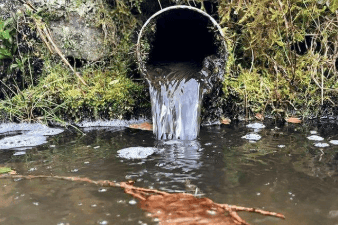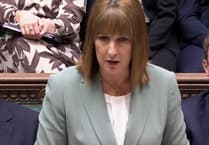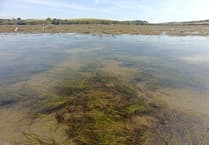Last year, overflows at the wastewater treatment works in Princetown spilled sewage into the Blackbrook River for the equivalent of just over 29 minutes in every hour throughout the year.
The primary cause was a lack of hydraulic capacity at the works. This suggests the issue has little, if anything, to do with poor maintenance or insufficient overflow capacity. Instead, it lies with the treatment works being unable to cope with existing demand—causing the overflows to operate prematurely.
Even so, 2024 was an improvement on 2023, when the treatment works discharged sewage into the Blackbrook for the equivalent of more than 54 minutes every hour. Some improvement works were completed last year, though a storm overflow assessment framework remains ongoing. In other words, the problems are far from over.
From Princetown, the Blackbrook and its sewage-laden waters flow east to join the West Dart, which becomes the Dart at Dartmeet, merging with the East Dart and flowing towards Dartmouth and the sea.
Before reaching the estuary, the Dart is further polluted by significant sewage discharges from locations such as Buckfastleigh, Totnes, Ipplepen, Harberton, and Harbertonford, as well as from tributaries like the Harbourne, Holy Brook, Bidwell Brook and Am Brook.
Long before it reaches the coast, the Dart is often anything but healthy.
Such spills are supposed to occur only during rainfall or snowmelt. They are counted in 12-hour blocks, meaning continuous rain for more than 12 hours would register as two spills. Yet, as the data below shows, the number and duration of spills make it difficult to believe they all occurred during wet weather.
Of course, not all spills are equal. Larger treatment works are likely to release more sewage per hour than smaller ones, and the environmental impact depends on the watercourse's size and flow rate.
Yet as Ofwat stated in its Overview of South West Water’s PR24 final determination (April 2025): “Even when heavily diluted, untreated wastewater may damage the environment and increases the risk to human health. It is therefore important that South West Water protects and improves the environment.”
For this reason, Ofwat added, “We expect South West Water to reduce the use of storm overflows by at least 21 per cent from the 2025-26 target to 2029-30, down to an average of 16 spills per overflow.”
Meeting that target will be challenging. But even if achieved, reducing spills by 21 per cent would still leave the pollution levels at last year’s 40 worst-performing sites unacceptably high.
The data referenced is from the Environment Agency’s Event Duration Monitoring (EDM) Annual Return for 2024. The Agency states it uses this data “to identify which overflows have unusually high spill counts or durations to inform where to investigate. When we find that water companies have broken the law, we take a wide range of actions—including prosecutions for the most serious offences.”
Judging by the figures, those investigations should already be underway. And South West Water should expect to be in court.
Such levels of sewage pollution are simply not acceptable.





Comments
This article has no comments yet. Be the first to leave a comment.